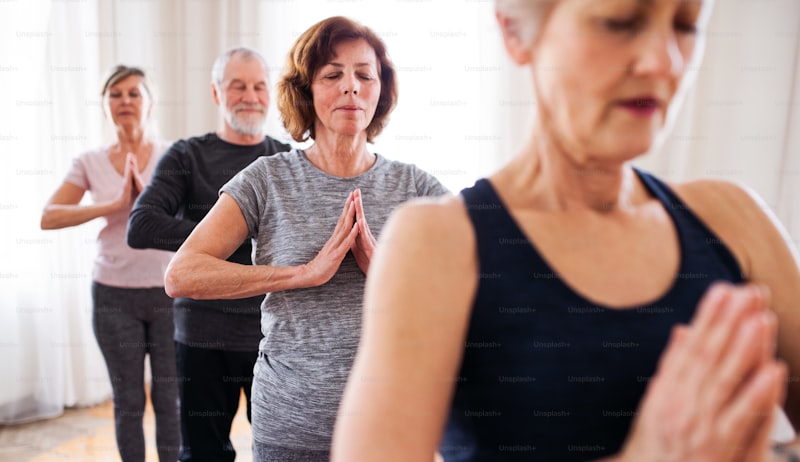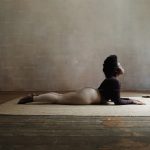We all do it — it is one of the first things we learn as a beginner yogi, but is Urdhva Hastasana really a pose, or just the route in and out of Uttanasana in sun salutes?
Pose or Pathway?
Having pondered this question I set about seeing what other sources said about this oft ignored version of Tadasana. I was amazed to find that Urdhva Hastasana, or Raised Hands Pose, is also known as Talasana, Palm Tree Pose, and Urdhva Vrksasana, Upward Tree Pose. I found reference to four different variations of the pose too. At this point I figured that it really was a real pose and therefore worthy of our attention.
But what exactly is Raised Hands Pose? Isn’t it just swinging our arms up overhead before sweeping them to the floor before we settle into Uttanasana?
The Technicalities of Upward Tree
Because the pose has it roots in Tadasana, and could be considered to be a progression of the pose, many of the teaching points are exactly the same for both poses.
- Feet — The feet are pointing forwards and firmly grounded through all four corners. They can be touching at the big toes if there is sufficient length over the lateral hips or wider apart if needed.
- Knees — A micro bend in the knees and attention to activating the quadriceps by drawing the knee caps gently up the thigh helps to energise the legs.
- Hips — Squeezing the knees together by activating the hip adductors at the same time as drawing the outer buttocks backwards stabilises the hips. A block between the knees can help to give students a clearer idea of what muscle action is needed.
- Bandhas — Mula and Uddiyana Bandha should be activated.
- Ribs — As the arms are raised, there can be a tendency to flare the ribcage. This can be prevented by activating the obliques on both sides to draw the rib cage towards the pelvis.
- Chest — Should be broadening.
- Shoulders — Throughout the passage of the arms from the sides to overhead, the shoulders must be externally rotated. Cueing the palms facing forwards and the thumbs leading the movement reinforces this correct movement pattern.
- Scapulae — Lateral rotation of the scapula is required to rotate the acromion high enough to allow room for the upper end of the humerus to move freely. Upper and lower trapezius work together to achieve this while serratus anterior prevents the scapula riding up the chest wall as the arm lifts. Instructing students to draw the armpits down or suck the ball into the socket of the shoulder helps to gain the right muscle activation.
- Space — A combination of serratus anterior activation and external rotation of the humerus by infraspinatus and teres minor creates space around the head and prevents a squeezed feeling in the shoulders while in the pose.
- Elbows — Should be extended.
- Hands — Students with sufficient range of movement in the shoulders to allow the hands to come together should be pressing through the base of their palms before bringing the fingers together. Slight tilting of the thumbs down towards the crown of the head to encourage leading with the little finger facilitates appropriate lengthening through the arms.
- Neck — Drishti is to the thumbs but the neck should maintain its normal cervical lordosis throughout most of its length with only a degree of extension at the very top, between the atlas and the head. This combination prevents the neck falling into excessive extension in the over-enthusiastic student.
- Tailbone — The tailbone should be lengthening towards the heels without exaggerating posterior tilt.
Cautions and Contraindications
This is a lovely pose that is accessible to most students and can be effectively used to teach scapular positioning and external rotation of the humerus. For beginners or students with shoulder problems, this is an ideal building block towards good technique in weight bearing poses like down dog and cobra. Anyone with tight shoulders is best stopping when the arms are parallel either side of the head rather than trying to touch the palms. This will come as the shoulders open with continued practice.
- Students with rounded shoulders and an increased thoracic kyphosis may find urdhva hastasana painful until they have are able to achieve better posture. Lifting the arms forwards rather than sideways may be more comfortable and is worth a try. Alternatively, limit the height that the arms are lifted to so that pain is avoided.
- A rotator cuff injury that results in the head of the humerus impinging on the acromion in overhead activities could also be problematic here. Attention to scapular position and external rotation of the humerus may make all the difference between aggravating a problem and resolving it.
- Students with neck pain may be best looking ahead rather than to the hands to avoid over extension of the neck.
- Flexible students with hyperextending knees may struggle to keep the quads activated and keep the micro-bend locking the knees back will be much easier for them. Keep cueing those quads.
Preparation Poses and Modifications
The pose can be regressed to sitting for less able students or those who find balance challenging. If seated, feet can still be grounded with knees squeezed together and hips energised. Above that, the pose is the same as for the standing version.
Some students will benefit from shoulder stretches to increase the range of movement that they have before they can achieve the full expression of the pose. Lying on their back with arms overhead will stretch latissimus doors. Taking the arms out to the side at shoulder height will target the pectorals and chest fascia — adding a supine twist in this position can enhance the shoulder stretch, especially if the knees are kept high as they move to each side. Cow face arms will also open shoulders.
Taking the arms forwards, with or without the thumbs interlinked in an option. Linked thumbs or a belt around the upper arms gives some resistance to encourage correct alignment of the upper arms.












